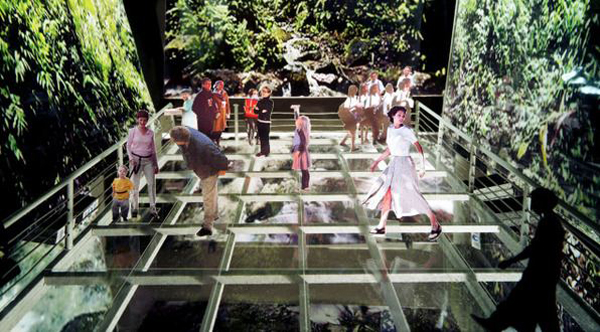Panama City’s Museum of Biodiversity, also known as Biomuseo, is designed by American architect Frank Gehry. In attempt to recapture the energy and urban impact of his Guggenheim Museum in Bilbao, Gehry was commissioned to design an iconic urban structure for this burgeoning Central American capital city. The building in question, like Bilbao’s, is meant to act as a distinctive jewel in the city’s skyline, an emblematic structure that both houses and acts as art. As its name implies, the museum is meant to catalog the tropical region’s biodiversity, and contains within its walls, a series of rainforest-like gardens and climate controlled-biospheres that were designed by Bruce Mau Design, who helped to articulate the museum’s interior spaces, visitor experience, and the manner in which visitors learn while attending the museum.
A unique aspect of this project relates to how visitors learn within the space. Mau and Gehry were able to conceive a partii that takes the visitor along a linear path through the museum, positioning educational dioramas (the aforementioned gardens and biospheres) amid this path. This results in learning via experience, as opposed to via learning, as is more traditional in museum design. Here, instead of reading about the rainforest, for example, the visitor walks through one.
This project utilizes distinctive architectural forms as situated within an urban setting to create a unique educational approach for museum visitors. The project focuses on the experiential qualities of the programmatic elements as a way of educating the visitor.





















